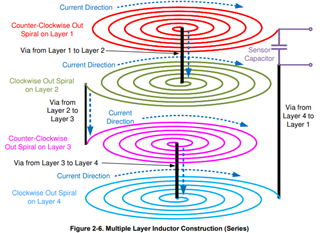Hi team,
Here's an issue from the customer may need your help:
When testing the LDC0851, the internal layers of the stack coils were reversed due to design errors, which resulted in the output state of the 0851 being reversed. However, it was found that the output could be converted high and low by moving metal close to and away from the reference coil for detection purposes.
1) Does this use affect the stability of switching transitions and temperature variations?
2) Also, can the coil be far away from the chip and connected with a wire? If so, the capacitor should be close to the chip or coil?
Could you help check this case? Thanks.
Best Regards,
Cherry


